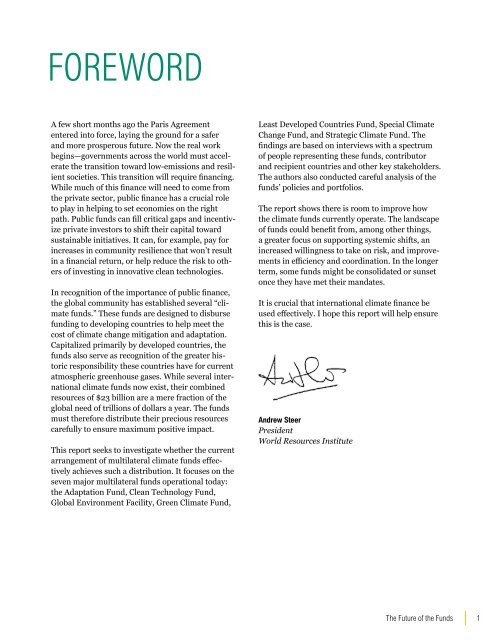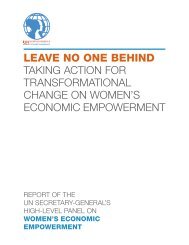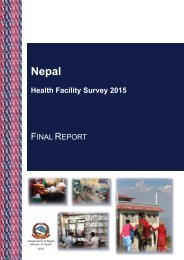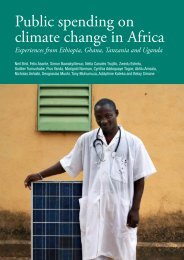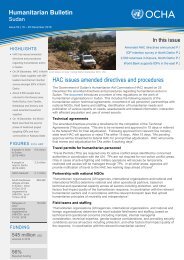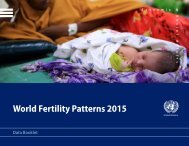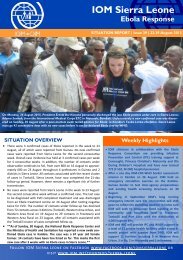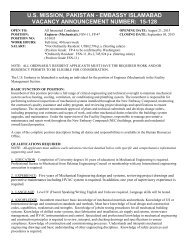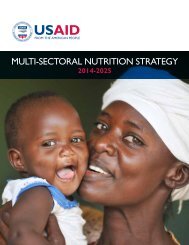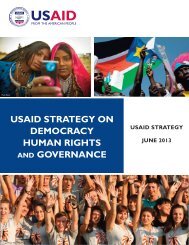THE FUTURE OF THE FUNDS
2nirr99
2nirr99
Create successful ePaper yourself
Turn your PDF publications into a flip-book with our unique Google optimized e-Paper software.
FOREWORD<br />
A few short months ago the Paris Agreement<br />
entered into force, laying the ground for a safer<br />
and more prosperous future. Now the real work<br />
begins—governments across the world must accelerate<br />
the transition toward low-emissions and resilient<br />
societies. This transition will require financing.<br />
While much of this finance will need to come from<br />
the private sector, public finance has a crucial role<br />
to play in helping to set economies on the right<br />
path. Public funds can fill critical gaps and incentivize<br />
private investors to shift their capital toward<br />
sustainable initiatives. It can, for example, pay for<br />
increases in community resilience that won’t result<br />
in a financial return, or help reduce the risk to others<br />
of investing in innovative clean technologies.<br />
In recognition of the importance of public finance,<br />
the global community has established several “climate<br />
funds.” These funds are designed to disburse<br />
funding to developing countries to help meet the<br />
cost of climate change mitigation and adaptation.<br />
Capitalized primarily by developed countries, the<br />
funds also serve as recognition of the greater historic<br />
responsibility these countries have for current<br />
atmospheric greenhouse gases. While several international<br />
climate funds now exist, their combined<br />
resources of $23 billion are a mere fraction of the<br />
global need of trillions of dollars a year. The funds<br />
must therefore distribute their precious resources<br />
carefully to ensure maximum positive impact.<br />
This report seeks to investigate whether the current<br />
arrangement of multilateral climate funds effectively<br />
achieves such a distribution. It focuses on the<br />
seven major multilateral funds operational today:<br />
the Adaptation Fund, Clean Technology Fund,<br />
Global Environment Facility, Green Climate Fund,<br />
Least Developed Countries Fund, Special Climate<br />
Change Fund, and Strategic Climate Fund. The<br />
findings are based on interviews with a spectrum<br />
of people representing these funds, contributor<br />
and recipient countries and other key stakeholders.<br />
The authors also conducted careful analysis of the<br />
funds’ policies and portfolios.<br />
The report shows there is room to improve how<br />
the climate funds currently operate. The landscape<br />
of funds could benefit from, among other things,<br />
a greater focus on supporting systemic shifts, an<br />
increased willingness to take on risk, and improvements<br />
in efficiency and coordination. In the longer<br />
term, some funds might be consolidated or sunset<br />
once they have met their mandates.<br />
It is crucial that international climate finance be<br />
used effectively. I hope this report will help ensure<br />
this is the case.<br />
Andrew Steer<br />
President<br />
World Resources Institute<br />
The Future of the Funds<br />
1


